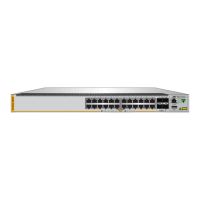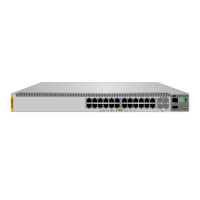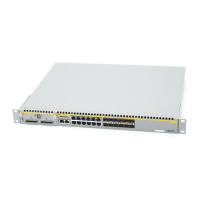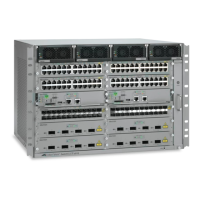Chapter 1: Overview
38
Power allocation is dynamic. Ports supplying power to powered devices
can cease power transmission if the switch power budget is at maximum
usage and new powered devices, connected to ports with higher priorities
become active.
Wiring
Implementation
The IEEE 802.3af standard defines two methods for delivering DC power
over copper cable by a switch to powered devices. These methods are
known as Modes A and B, and identify the individual wires that carry the
DC power within the cable from the switch to powered devices.
Copper cabling typically consists of eight wires. With 100Base-TX
devices, the wires connected to pins 1, 2, 3, and 6 on the RJ-45
connectors carry the network traffic while the wires connected to pins 4, 5,
7, and 8 are unused. At higher speeds, all eight wires are used to carry
network data.
It takes four wires to deliver DC power to a powered device. With Mode A,
power is delivered on pins 1, 2, 3, and 6. These are the same pins in
10Base-T and 100Base-TX devices that carry the network data. With
Mode B, power is provided over the spare wires.
The ports deliver power for device classes:
0 to 4: Mode A – x530-28GPXm and x530-52GPXm
0 to 8: Modes A and B – x530-10GHXm and x530-18GHXm
Powered devices that comply with the IEEE 802.3af standard are required
to support both Modes A and B. Classes 0 to 4 legacy devices that do not
comply with the standard will work with the switch if they are powered on
pins 1, 2, 3, and 6.
Caution
Disable PoE on ports before connecting or disconnecting copper
cables to prevent damaging the switch. Disconnecting Ethernet
copper network cables while the switch is providing power to
powered devices (PDs) can damage the switch. E131
Caution
When hot-swapping PoE PD Classes 5-8, the IC device can be
damaged when the Ethernet cable is removed while supplying PoE
power. To avoid damage, disable the port with the CLI or power off
the unit before removing the cable.

